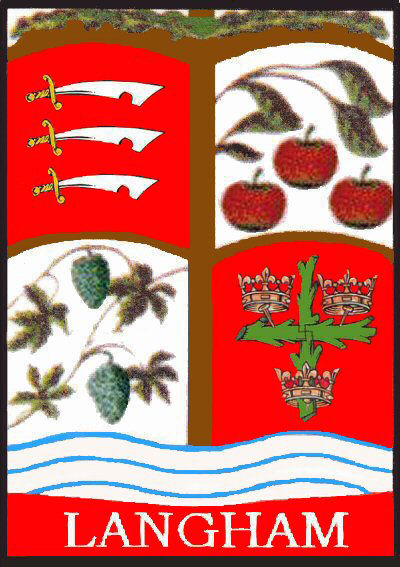Public Rights of Way Issues
The links below provide further information on how to report issues to the appropriate authorities, which for most of the topics below will be to Essex County Council via their online reporting systems, or, in a situation of an immediate risk to public safety, to their helpline on 0345 603 7631. Please note that Parish Councils have no additional "hotlines" for reporting issues. We therefore politely request that residents report issues themselves in the first instance. If you get no satisfaction then PLEASE DO REPORT THIS to us. This will help us build an evidence-based picture of where online reporting systems might be failing, so that we can lobby for improvements to the reporting mechanisms.
Public Rights of Way Maintenance
Essex County Council as the highway authority has a statutory duty to record and keep public rights of way open.
Public rights of way are predominantly rural routes through the countryside. They are all a type of highway and came about through historic usage as routes for farm workers to get to their places of work, for people walking to church or to schools and as tracks to drive livestock to markets. These days they are mostly used for leisure purposes.
They all pass through privately owned land, which is often working farmland so the County Council work closely with the landowners to keep the routes accessible.
Most of these rights of way are rural or form access to rural areas, and so the standard of maintenance would be very basic; ensuring they are safe whilst at the same time protecting the rights of the public to enjoy a rural environment.
Types of Right of Way
There are four types of right of way which have different access rights. Each is maintained with these public rights in mind.
Footpath
A footpath is a highway over which the public has a right of way on foot only. See the Footpath Map of Langham.
Bridleway
A bridleway is a highway over which the public has a right of way on foot, horseback and on all types of bicycle.
Byway
A byway open to all traffic (BOAT) is a highway over which the public has a right of way on foot, horseback or bicycle and by vehicle of all kinds, including horse-drawn and motorised vehicles.
Restricted byway
A restricted byway allows right of way on foot, on horseback, riding a bicycle or using any other vehicle that is not mechanically propelled, for example a horse and carriage.
Essex County Council maintenance responsibilities
ECC carry out a number of actions to ensure that Public Rights of Way are kept in good order and undertake to:
- Put fingerposts where paths leave a road
- Waymark path junctions
- Install and repair bridges over waterways
- Maintain the vegetation upgrowth on routes so as not to cause an impassable obstruction (except cross field paths through arable crops where the landowner has a responsibility)
- Repair surfaces
- Remind landowners to keep hedgerows clear from overhanging and obstructing passage along a PROW
- Ensure that the landowner keeps their stiles and gates in good repair and are easy to use
Fingerposts and Waymarkers
Fingerposts are erected where a path leaves a road. Waymarkers are shorter posts with circular disks that direct walkers at junctions with other paths. Where defects are logged regarding either of these they are treated as a low priority and will be repaired or replaced as part of a local planned programme of works. Typically each parish is surveyed in full once every 5 years, when all defects will be picked up by ECC inspection team and jobs raised to replace and repair items as necessary.
Public rights of way are predominantly rural routes through the countryside. They are all a type of highway and came about through historic usage as routes for farm workers to get to their places of work, for people walking to church or to schools and as tracks to drive livestock to markets. These days they are mostly used for leisure purposes.
They all pass through privately owned land, which is often working farmland so the County Council work closely with the landowners to keep the routes accessible.
Most of these rights of way are rural or form access to rural areas, and so the standard of maintenance would be very basic; ensuring they are safe whilst at the same time protecting the rights of the public to enjoy a rural environment.
Types of Right of Way
There are four types of right of way which have different access rights. Each is maintained with these public rights in mind.
Footpath
A footpath is a highway over which the public has a right of way on foot only. See the Footpath Map of Langham.
Bridleway
A bridleway is a highway over which the public has a right of way on foot, horseback and on all types of bicycle.
Byway
A byway open to all traffic (BOAT) is a highway over which the public has a right of way on foot, horseback or bicycle and by vehicle of all kinds, including horse-drawn and motorised vehicles.
Restricted byway
A restricted byway allows right of way on foot, on horseback, riding a bicycle or using any other vehicle that is not mechanically propelled, for example a horse and carriage.
Essex County Council maintenance responsibilities
ECC carry out a number of actions to ensure that Public Rights of Way are kept in good order and undertake to:
- Put fingerposts where paths leave a road
- Waymark path junctions
- Install and repair bridges over waterways
- Maintain the vegetation upgrowth on routes so as not to cause an impassable obstruction (except cross field paths through arable crops where the landowner has a responsibility)
- Repair surfaces
- Remind landowners to keep hedgerows clear from overhanging and obstructing passage along a PROW
- Ensure that the landowner keeps their stiles and gates in good repair and are easy to use
Fingerposts and Waymarkers
Fingerposts are erected where a path leaves a road. Waymarkers are shorter posts with circular disks that direct walkers at junctions with other paths. Where defects are logged regarding either of these they are treated as a low priority and will be repaired or replaced as part of a local planned programme of works. Typically each parish is surveyed in full once every 5 years, when all defects will be picked up by ECC inspection team and jobs raised to replace and repair items as necessary.

